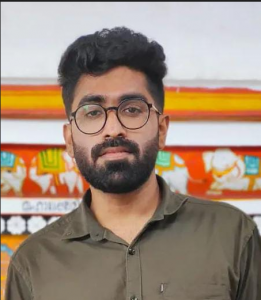News Highlight:
Addressing the Law Day event at the Supreme Court on November 26, President Droupadi Murmu raised the issue of the plight of poor undertrials holed up in the prisons of India.
Key Takeaway:
- The latest official NCRB statistics indicate that over the last 10 years, the number of undertrials in jails has risen constantly and peaked in 2021.
- The most alarming still is the condition of countless poor and resourceless who continue to be disproportionately arrested.

Undertrials:
- About:
- Under-Trial Prisoners are unconvicted prisoners.
- An undertrial is a person who is currently on trial or who is imprisoned on remand whilst awaiting trial or a person who is on trial in a court of law.
- The 78th Report of Law Commission also includes a person in judicial custody on remand during investigation in the definition of an ‘undertrial’.
- Status of Undertrials in India:
- According to the ‘Prison Statistics India’ report published by the National Crime Records Bureau (NCRB) in 2020, there were as many as 4,88,511 prison inmates, of whom 76%, or 3,71,848, were undertrials.
- In 2020, about 76% of all prison inmates in the country were undertrials, of which about 68% were illiterate or school dropouts.
- Delhi and Jammu and Kashmir (J&K) had the highest ratio of undertrials in jails at 91%, followed by Bihar and Punjab at 85%, and Odisha at 83%.
- About 27% of all undertrials were found to be illiterate, and 41% had dropped out before Class X.
- Concerns over undertrials:
- Lack of resources:
- The condition of countless poor and resourceless who continue to be disproportionately arrested, routinely remanded to judicial custody in prisons, face long-winding trials
- They are unable to seek and secure bail either because of a lack of economic resources or because of fear of the social stigma outside.
- Violence and Abuse while in remand:
- Group violence is also endemic, and riots are common in jails.
- Physical mishandling and extra-judicial torture by jail officials are usually seen in India.
- No conduct of the prison authority is criminalised, making the authority act in negligence which could and does result in the death of inmates.
- Health problems:
- Prisons face problems of overcrowding and a shortage of adequate space to lodge prisoners in safe and healthy conditions.
- Unhealthy conditions and infectious and communicable diseases spread easily.
- Social Stigma:
- Social stigma and social exclusion lead to circumstances propelling families towards delinquency and exploitation by others.
- Lack of resources:
Constitutional protection for Undertrials:
- Article 39A
- The State shall secure that the operation of the legal system promotes justice based on equal opportunity and shall, in particular, provide free legal aid by suitable legislation or schemes or in any other way to ensure that opportunities for securing justice are not denied to any citizen because of economic or other disabilities.
- The right to free legal aid or free legal service is an essential fundamental right guaranteed by the Constitution.
- Article 21
- Reasonable, fair and just liberty under Article 21 of the Constitution of India, which says, “No person shall be deprived of his life or personal liberty except according to procedure established by law”.
Reasons for the delay in justice:
- Overburdened judiciary
- An overburdened judiciary is a major reason for the delay in justice.
- Official capacity:
- Police and prison officials often fail to fulfil their roles, leading to long trial delays.
- Disadvantaged social groups:
- Most of the undertrials come from disadvantaged social groups.
- Lack of resources constricts their ability to seek out lawyers, and hostile police and prison authorities are rarely of help — despite a 1980 Supreme Court ruling that Article 21 of the Constitution entitles prisoners to a fair and speedy trial as part of their fundamental right to life and liberty.
- Understaffed judiciary:
- The understaffed judiciary compounds the problem.
- Section 167 of the Code of Criminal Procedures mandates that judges can extend a detainee’s custody for a period of 15 days at a time.
- For that to happen, detainees must be produced regularly before the courts. This rarely happens; proceedings don’t take place in time, and the undertrials are shuttled from court to court.
What needs to be done:
- An undertrial review committee, comprising the District Judge, District Magistrate and Superintendent of Police, should be set up in each district. The onus of constituting such a panel for every district should be put on the National Legal Services Authority, acting in coordination with the State Legal Services Authority.
- The legal services authorities in various States must play a principal role in inculcating awareness among prisoners about their rights, especially provisions that entitle them to freedom.
- The real solution, however, does not lie merely in the early release of prisoners on bail but in expediting the trial process.
Pic Courtesy: Freepik
Content Source: Indian Express



